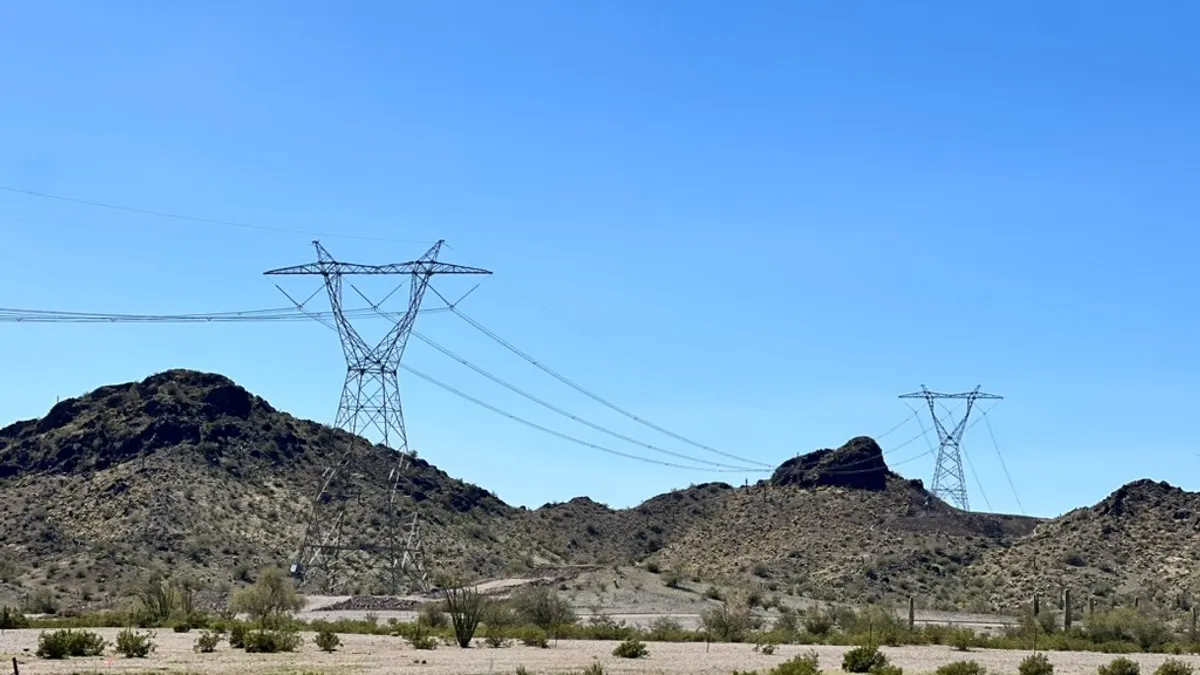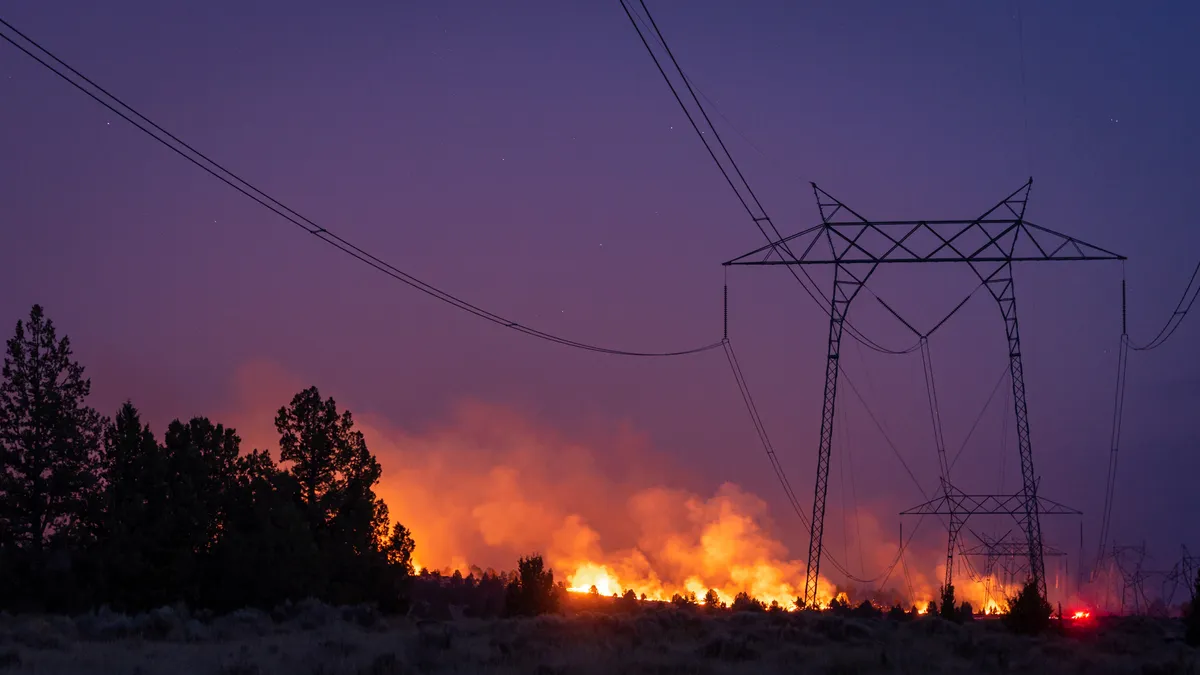What you are about to learn from this interview with ENBALA Power Networks CEO Ron Dizy:
- Connecting customer loads to demand in the system creates flexibility, improves reliability and helps "balance" the grid.
- Demand response and ramping generation up or down still hold value, but real-time demand management is more efficient, engages customers without disruption and minimizes wear-and-tear.
- Real-time demand management can be used to meet diverse needs such as frequency regulation and wind integration.
Energy demand management once consisted of ramping electricity generation up or down when peak demand put undue stress on the grid. Now, however, demand management comes in the form of additional solutions that can tackle the problem of reliability by mitigating—not just reacting to—demand for electricity. ENBALA Power Networks, a smart grid technology company, is doing just that—their platform connects utilities, system operators and customers in order to make the electricity system more flexible and, ultimately, reliable.

Utility Dive spoke with CEO Ron Dizy to get his take on demand-side management and hear about the exciting projects ENBALA is working on to bring more balance to the grid. Here's what he had to say:
UTILITY DIVE: What is ENBALA mission and what problem are you trying to solve?
RON DIZY: We are trying to continuously connect commercial and industrial customers of the electricity system in real time, to capture the inherent flexibility in how they consume power and provide that flexibility back to the grid operator.
What kinds of technology does that require and where on the grid does that get implemented?
DIZY: There’s a real-time connection to the customer. We tend to work with large commercial, industrial and institutional customers. In general, there is already some building automation or SCADA system that is controlling their load, or their process, for example their heating and cooling equipment. We simply connect to that and we capture real-time information as to what those devices are doing. From that, we can determine what amount of flexibility they can offer right now, in real time—can they use a little more power or a little less power without impacting their underlying process.
The keys to that are: a) it’s real-time; and, b) it’s highly respectful of their fundamental need to deliver value as it relates to their process. So if it’s a water plant, it’s to move water—or to treat wastewater—and that is more important than supporting the grid. The key parts to the technology is the real-time connectivity so we know and understand in real time what the load is doing and what its flexibility is. And then the second part is the optimization engine that we have in the middle that’s gathering all that information and determining the best way to respond to the need on the grid. In general, we receive a signal from the grid saying we need you to use a little more or a little less power right now in terms of flexibility. When we get that signal, we determine the best way to respond based on the real-time status of the loads in the power system.
Is this flexibility then sold on the wholesale electricity market?
DIZY: It depends on the service we’re providing. In an organized market like PJM, where the markets have been deregulated, then, yes, there are markets for this flexibility. It’s a little bit different than the energy market, but there is a market for so-called ancillary services, and these are the flexibility services that allow the grid to remain in balance. So, yes, we can sell that flexibility in an open market where the opportunity exists.
In other markets, where the utility is still vertically integrated, meaning a single company still owns generation, transmission and distribution (for example, Quebec Hydro, Florida Power & Light or Sacramento Municipal Utility District), then they may simply want to own a platform like this because it gives them a much more efficient and less expensive way to deliver flexibility to their system while at the same time becoming more closely engaged with their customers.
What are the advantages of connecting customers' needs to the needs of the system?
DIZY: In any power system, you need balance and the way we achieve it today—and have for the last 100 years—is by reserving some chunk of the generation fleet to supply this flexibility. By holding back some of this generation, we can put a little more power on or take a little off as we need to provide balance in the system. The problem with that is you’re using a big, expensive machine (a generator) that has wear-and-tear associated with it to supply relatively small amounts of this flexibility. So that’s just an expensive way of doing it, but that’s the only way we could do it for the last 100 years. Using the flexibility to accomplish the same thing is just a much smarter way to deliver the same need to the power system.
There are really three key advantages. First, it’s cheaper because what we’re really doing is we’re taking advantage of flexibility that already exists in the power system. Many, many loads have some amount of flexibility in how they use power; this flexibility is just unused so far. Really, the idea behind our GOFlex platform is to connect to that flexibility, capture it and make it available to the grid. I think it’s a cheaper, smarter way to do it. The second benefit is that it really does provide a way for the utility to engage with the customer. The customer can now become part of the successful operation of the system. Normally they get paid for participating—and that’s still cheaper than doing it with generators. The third benefit is it’s greener. It’s more efficient to get flexibility from loads that already have this flexibility rather than do it with a generator that is going to have higher emissions because it is being operated less efficiently.
Is there the possibility of over-promising flexibility to the operator? By that I mean, what happens when you promise a certain amount of flexibility, but then the customers you’re connected to no longer have that flexibility available?
DIZY: It’s unlikely. The whole idea here is that devices have a certain amount of flexibility—and, individually, they may not be able to provide flexibility exactly when the power system needs it—but across a network, some of the loads will always have the capability to deliver flexibility. The key idea is that the diversity and number of loads provide high confidence that the flexibility will be there when you need it.
Can you tell about some of the projects ENBALA is working on?
DIZY: We’ve been actively supplying something called frequency regulation in PJM since November 2011. We were also selected to be a new provider of frequency regulation in Ontario and we should be live with that in a month or two. We are also doing a project to integrate wind in New Brunswick. We’ve been live with that since last September and then we’re also doing a very similar project in Nova Scotia, also to integrate wind.
Can you explain how ENBALA supplies frequency regulation to PJM?
DIZY: Frequency regulation refers to balancing the grid in real-time. It’s a very demanding product, so it means every four seconds we get a signal from PJM. Literally, every four seconds. That’s 7.88 million times per year. We get a signal from PJM saying we need a little more power or a little less power in the power system. The volatility just happens: people turning on and off lights, starting stoves, opening fridge doors. That causes some fluctuation in the amount of power in the grid and that has to be balanced all the time in real-time. Frequency regulation is that balancing service. It is a standard ancillary service, procured in all organized markets. In PJM’s case, that literally is a product that sells and prices differently in each and every hour of the year. PJM procures it from a couple hundred generators plus a few alternative providers like us.
And, how is ENBALA helping to integrate wind into the grid?
DIZY: Our platform is about supplying flexibility to the grid, though a network of loads. So when you have wind, there are two things that make it a challenge to integrate into a power system. One is that when the wind is blowing, there’s some amount of volatility. Wind doesn’t just blow steadily and so you get some volatility in the output of the wind farm and that has to be balanced somehow. We can use load to manage that volatility—so use a little more power, there’s little more wind; use a little less power when there’s a little less wind. The second challenge occurs when the wind stops blowing, particularly if it is at a particularly inconvenient time—like during the morning ramp. If you lose the wind during that ramp, it’s bad enough that you’ve lost the wind but you’ve also lost it at a time when the power system is under some stress [and] you’re trying to add generation to it. Again, we can use intelligently managed loads to mitigate that impact, so we can give them a little longer to get another generator started to replace the wind. It’s really those two things: one is handling the volatility of the wind and two is helping to manage ramp during those days that you may lose the wind at a particularly inopportune time.
And the balancing of loads is helping make the grid more reliable.
DIZY: Exactly. A question that people sometimes ask is, "what would happen if you didn’t balance the grid?" As you know, we have a 60 Hz frequency system here in North America (in Europe it’s 50 Hz); if we weren’t balancing the grid, sometimes the frequency would be 61 Hz and sometimes 59 Hz. That doesn’t sound like much, but its bad for equipment. So it’s the reliability of the grid, but it’s power quality too. If we didn’t do it, equipment wouldn’t work as well because the frequency would be different than expected.
What do you see as the difference between demand response and what ENBALA does?
DIZY: We think that this idea of demand management is evolving beyond just traditional demand response—meaning the curtailment of loads on hot days in the summer so that we don’t have to build a marginal generator. That’s valuable. We think that’s an important concept. [The advantage of real-time demand-side management] is that you can use it all the time, for many different services—and it does not specifically refer to curtailment. Whereas demand response is typically a five to ten times-per-year kind of product, real-time demand management can be used for more or less continuous support of the grid. If we can intelligently capture the flexibility in loads, we can be using all that—and so it’s really a much more powerful platform.
Would you like to see more utility and energy news like this in your inbox on a daily basis? Subscribe to our Utility Dive email newsletter! You may also want to read Utility Dive's look at why utilities need to get customers to buy into smart grid adoption.






















